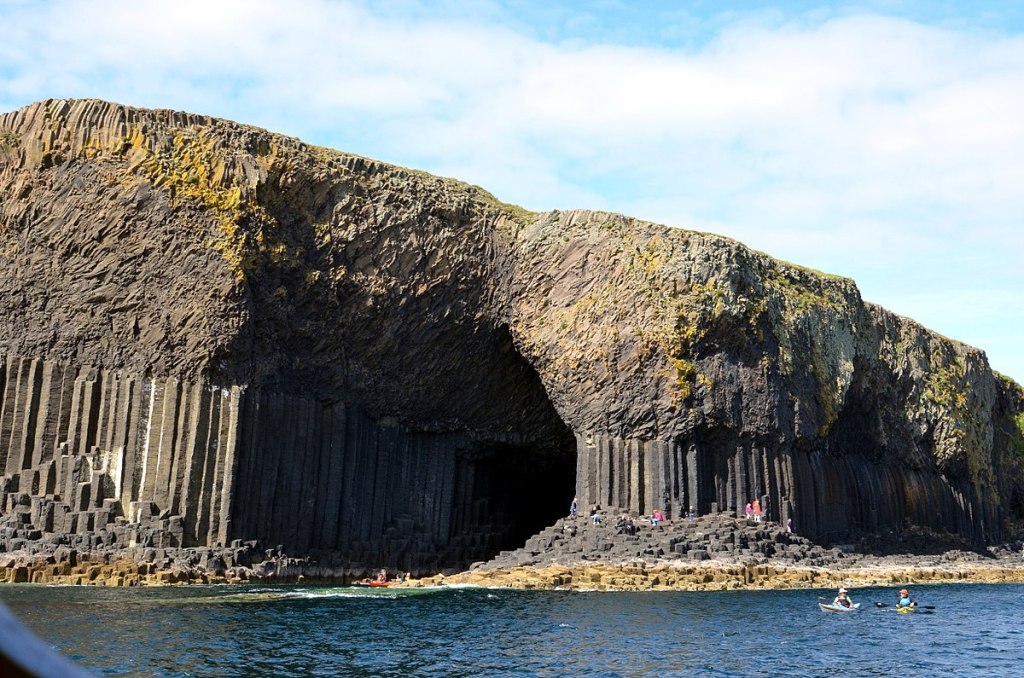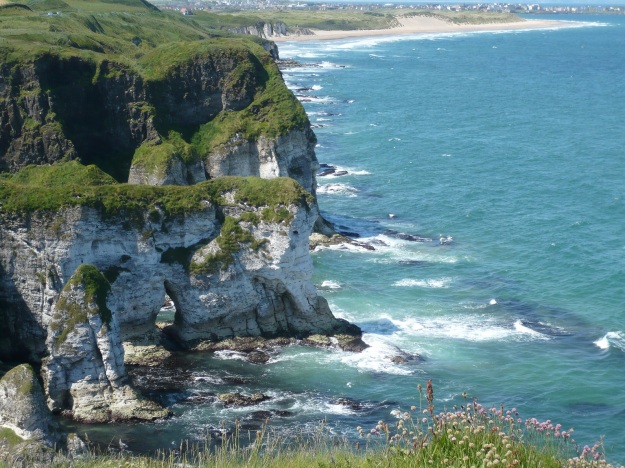It seemed appropriate to have some sea pinks in my first post, although they flower in June and it’s now October. I liked this photo that I took at the Giants Causeway, with the sea pinks growing out of the cracks between the stones.
The Giants Causeway was formed 60 million years ago from a volcanic lava flow and as the lava cooled it contracted and cracked to form these basalt columns. There are about 40,000 polygonal shaped columns, mainly hexagonal in shape but also many with 5 or 7 sides.

The mythological explanation for the formation of the causeway is that it was built by the Irish giant Fionn mac Cumhaill. Fionn (or Finn in English) was challenged to a fight by the Scottish giant Benandonner and he built a bridge across the North Channel so they could meet.
The rock formations are so unusual that in the past it was hard to believe that they were a natural phenomenon, and as late as 1694 the Royal Society thought it necessary to devote time to confirming that they were indeed natural! ! In fact, the reason they thought the formations might not be man-made was because of the lack of mortar between the columns. Had they been to Fingal’s Cave on the island of Staffa (the Scottish end of Finn’s causeway) they might still not have been convinced, because the columns here recrystallized along the vertical joints making them look as if they had been cemented together. However, Fingal’s Cave was unknown to the outside world at that time and it would be nearly another 100 years before it started to become known and later still, in 1829, when it was immortalised in Mendelssohn’s Fingal’s Cave, or Hebrides Overture.

These lumpy pieces of basalt beside the road leading down to the causeway are called the Onion Skin rocks and are a type of pillow lava.

The whole of the North Antrim coastline has stunning geology and geomorphology. A little way west are the aptly named Whiterocks.
Here you can see 80 million year old chalk which is overlain by the darker, 60 million year old basalt.

~

~~~





